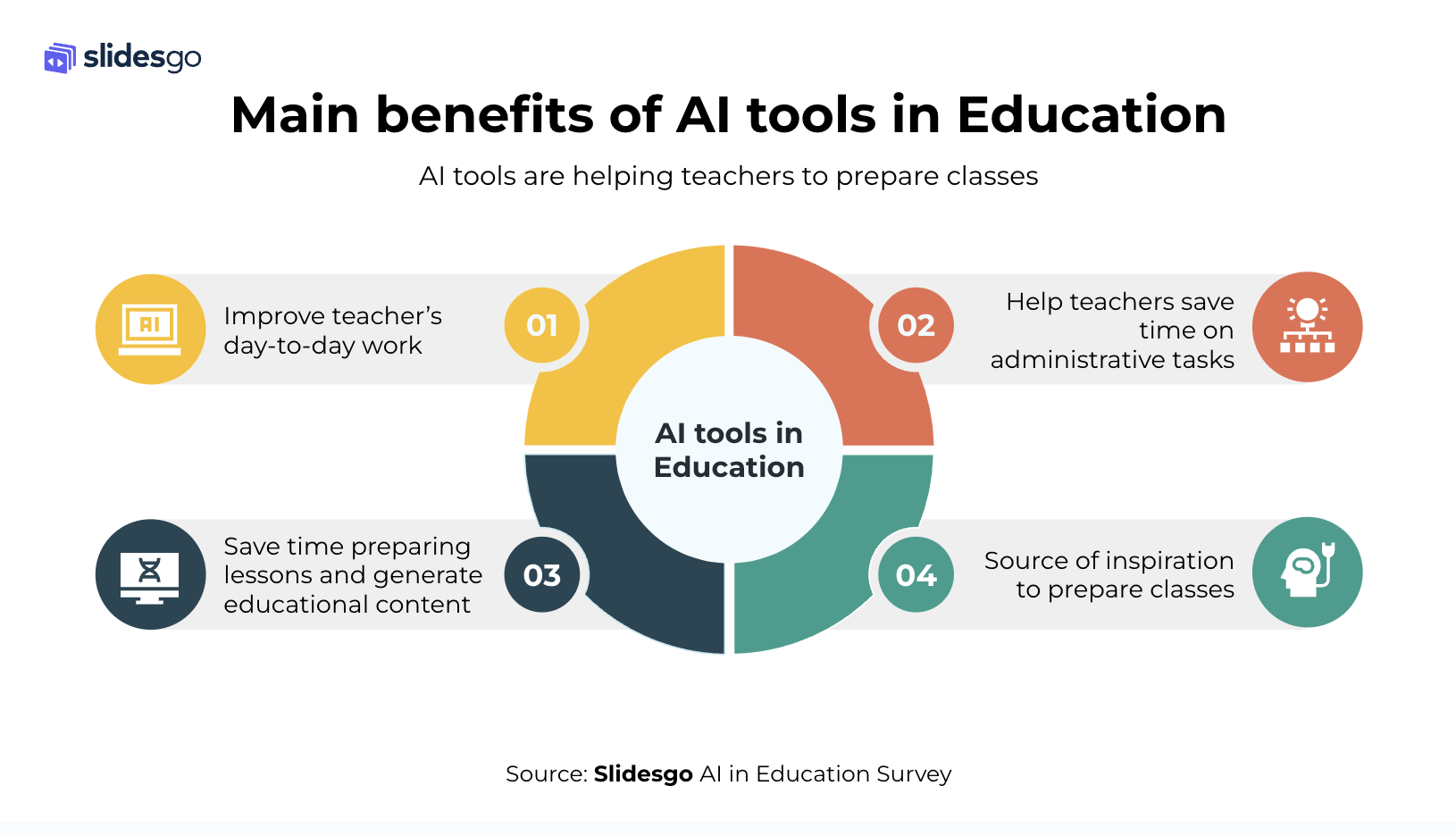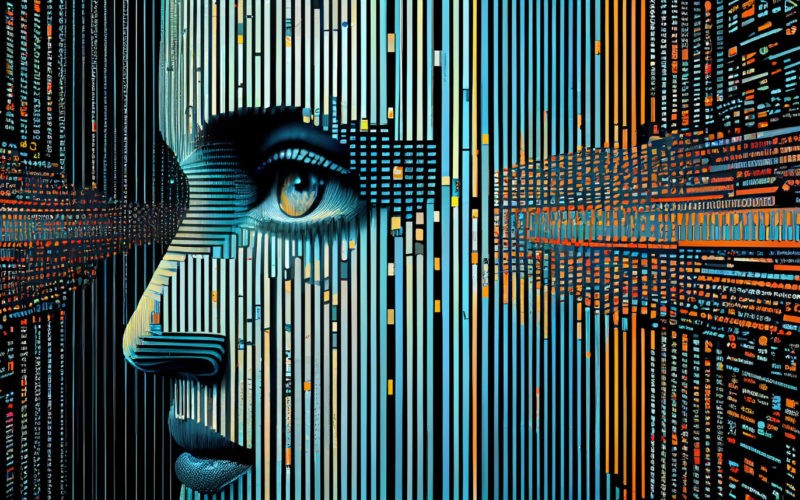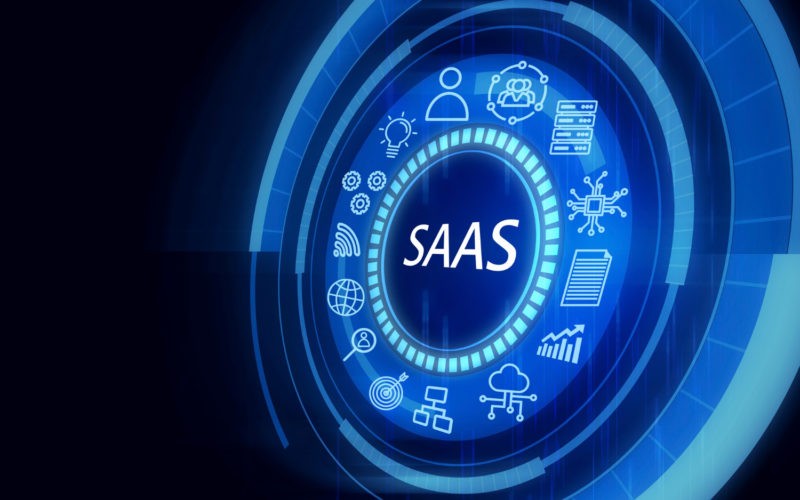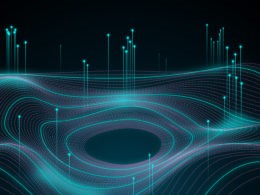Imagine a future where a computer could write a novel that millions of people would want to read, a symphony that would equal Beethoven’s, or a work of art that would hang in the Louvre. Although it seems like something from science fiction, artificial intelligence (AI) is rapidly advancing, making it a reality.
Artificial intelligence (AI) has advanced significantly in recent years, with innovations in speech and picture recognition, machine learning, and natural language processing brought forth by leading AI development companies. But the question of whether machines are genuinely creative still lingers. Can they imitate the intuition and imagination that inspire innovation in people? As we enter a new age of human-machine collaboration facilitated by cutting-edge AI development company, these are the issues we need to answer.
The capacity to think creatively, generate original ideas, and create original works of art or literature is frequently seen as a trait that is distinctively human. Are robots only capable of creating formulaic or pre-programmed replies, or can they actually replicate this type of creativity?
On the surface, it could appear that since computers lack human qualities like imagination, intuition, and emotional expression, they are unable to truly express themselves creatively. However, recent Artificial Intelligence Development have demonstrated that robots are capable of producing creative works, although in a manner distinct from that of humans.
Generative adversarial networks (GANs), which play two AI algorithms against one another in a game of “create and critique,” are one method for encouraging machine innovation. While the other algorithm assesses and offers comments, the first program produces images, music, or other works of creativity. The algorithms develop more complex and unique outputs over time as they learn from one another.
Reinforcement learning is a different strategy where computers are rewarded for providing unique or unexpected results. This can yield unexpected and unusual outcomes, such as Google’s DeepDream program, which modifies neural networks to produce bizarre and hallucinogenic pictures.
Some experts contend that these methods essentially represent an instance of “algorithmic creativity” that makes use of pre-existing data and guidelines. Machines can come up with novel ways to combine things that already exist, but they are unable to completely start from scratch or defy their programming.
Additionally, creativity encompasses the act of discovery and investigation as well as the creation of new or unique works of art. Risk-taking, making errors, and learning from failures are common components of human creativity. On the other side, machines are built to reduce mistakes and maximize performance, which might restrict their capacity for genuine exploration and innovation.
Despite these restrictions, there are several ways for AI to improve creativity across a range of industries. For instance, AI algorithms in music creation can provide fresh melodies and harmonies based on established patterns and genres, giving human composers ideas and new approaches. Artificial intelligence (AI) in the visual arts may be used to create fresh textures, hues, and forms that can be included into both digital and tangible works of art.
AI may be used in education to tailor instruction and provide students feedback based on their own strengths and shortcomings, empowering them to discover their own unique abilities and skills. AI can help educators create dynamic, engaging lessons that stimulate originality and critical thinking. A recent survey conducted by Slidesgo on AI tools in education has highlighted their potential to significantly benefit educators. AI tools in education have the capacity to streamline administrative tasks, while also serving as a valuable source of inspiration, ultimately saving educators precious time when it comes to content creation

Even while it’s unlikely that robots will ever be able to completely duplicate human creativity, they may nonetheless contribute significantly to increasing and supplementing it in a variety of contexts. We may reach previously unreachable new horizons of creativity and invention by fusing the powers of human and machine intelligence.
ChatGPT and Dall-E offer the impression that they can perform artistic chores like composing poetry or creating paintings in a manner that is frequently identical to our own abilities.
Does this imply that machines are indeed capable of creativity? Or do they only mimic creativity while in fact adhering to a set of pre-established or probabilistic principles that we have provided?
What is Creativity?
We need to start by defining creativity in order to address this ostensibly complex and philosophical conundrum.
A straightforward description from the Oxford dictionary is “the use of imagination or original ideas to create something.”
Since “imagination” is the faculty we link with our capacity for original thought and, thus, the origin of creativity, I believe it makes a suitable place to start our inquiry.
The functioning of the human brain, of which imagination is one component, is still largely unknown. However, we might interpret the significance of “imagination” to suggest that some level of thought must go into the creation process in order for us to claim to be creative.
Additionally, it’s critical that the work we produce has some sort of significance or meaning; otherwise, we might just be creating a mess instead of being creative. For example, if we scribble ink across a page without considering its aesthetic value or randomly combine words to form a word-soup, we won’t even consider the message we’re trying to convey.
Additionally, there must be some element of originality; just duplicating a poem or picture by another person cannot really be considered creative until we give it our own interpretation or special touch.
Human imagination and ideas frequently result through associations; we see, hear, feel, or discover something, which prompts us to generate an idea or viewpoint. We are being creative in a very human sense when we express this by making something that symbolizes that link, like composing a poem about something terrible in order to convey the grief of an event or circumstance to others.
Generative AI
Generative AI makes use of machine learning (ML) algorithms that can learn a set of rules by analyzing a sizable body of existing data (referred to as “training data”) and then apply those rules to produce something new depending on an input (referred to as a “prompt”).
It may develop rules that state that there is a high likelihood that “the sun” is hot, big, yellow, and around 100 million miles away after being trained on 1,000 descriptions of “the sun,” for instance.
Therefore, it has all the knowledge required to complete the task when asked to write a sentence that describes the sun.
The same logic would hold true if a sound-based algorithm were requested to create music that was inspired by the sun, or if a graphical generative AI algorithm were asked to create a picture of the sun.
In this incredibly condensed example, the hypothetical AI program is utilizing just four criteria to produce material about the sun: heat, size, color, and distance from us.
One of the most advanced generative AI models in use right now, OpenAI’s GPT-4, is estimated to have trained on one trillion different parameters. Even though the precise characteristics of the training dataset have not been made public, we can assume that it contains far more information about the sun than the hypothetical model we used as an example.
As a result, the information it may produce has the potential to be far more intricate, nuanced, in-depth, and, from a certain perspective, creative.
This is GPT-4‘s (through ChatGPT Plus) response to my challenge to “write a haiku about the Sun” as a test.
“Golden Orb Ascends
Warmth embraces Earth below
Life awakes with light.”
The fact that a haiku is such a constrained form is, of course, what makes writing them successfully so “creative.”
Even still, a remarkable quantity of information, thoughts, and ideas have been crammed into the poem by the algorithm. These include the sun’s color and form, as well as its ability to produce heat and light down on Earth, enabling life.
I’m not a poet, but I am a person, and it would be very difficult for me to communicate all of those different ideas in a haiku, which has a three-line, five-seven-five syllable structure. Is this a sign that the algorithm is more imaginative than I am? It would seem challenging to make an argument that it isn’t from a simply objective standpoint!
Can Computers Have New Ideas?
However, it’s crucial to keep in mind one point in order to truly move closer to a clear response to the query:
No matter how great a piece of poetry or art produced by a computer may be, it is always constructed using building blocks extracted from the training data. In other words, it lacks the true ability to engage in what we would refer to as “original thought” — that is, to generate fresh ideas.
Exist humans? We have a skill that we refer to as “imagination,” which we conceive of as the capacity to conjure up fresh notions and ideas in our minds, as we previously discussed. But how many of the ideas we think of as being creative are actually based on something we’ve already seen, heard, read, lived, or learned? As we’ve already mentioned, even to psychologists and neuroscientists, the functioning of the human brain is still mostly unknown.
The connections we draw between things we’ve already experienced and the novel ideas we come up with, though, are something that, in my opinion, distinguishes humans from robots in this respect. It is information we have already seen, heard, and read (our own “training data”), but it has been filtered through the prism of our individual perceptions, emotions, beliefs, and experiences—in other words, via the lens of our humanity.
Because of these thoughts, opinions, and experiences, we are what we are—humans. Generative AI algorithms also create connections, but they do it purely mechanically and probabilistically. They accomplish this by looking at which words or concepts are linked together the most. “What shape is the Sun?” “The Sun is an orb.”
ChatGPT Plus may be aware that the sun radiates heat and light and enables the existence of light. But unlike you or I, it doesn’t have any unique personal feelings, emotions, or recollections concerning the sun.
The Illusion of Creativity
The simplest approach to describe the differences between human and machine creativity today could be to say that human creativity is the original source, whereas machine creativity is best understood as an imitation or an illusion of human creativity. a digital extension of our capacity to communicate with others, come up with fresh concepts, and elicit strong feelings from them.
After all, Dall-E and GPT-4 wouldn’t be able to “create” anything more amazing than random word-soup or a toddler’s scrawls without humans to provide the data that has been used to train artificial intelligence.
The argument for or against generative AI, at this time, is essentially simply a question of semantics because it is without a doubt the closest we have gotten to creating creative robots.
We will likely adjust our definition of “creative” as time goes on and AI’s capabilities increase, which will affect how we respond to the issue we’re posing here. As we look for methods to express ourselves that continue to go beyond what robots can do, we could find that human creativity itself transforms.
This might lead to whole new theories about what makes us human, a concept that many believe to be at the core of much of our past artistic endeavors, as well as new kinds of artistic expression.
One thing is certain: One of the many disruptive consequences that Artificial Intelligence Development will have on society in the years to come will be making us reevaluate our views about what constitutes creativity, expression, and art. And if the outcome is that we gain a little more insight into what it is that makes us human, that in and of itself, driven by advancements in Artificial Intelligence Development, might have a huge impact on how we spend our lives in the future.
⸻ Author Bio ⸻
Yokesh Shankar is the COO at Sparkout Tech and one of the primary founders of this highly creative space. He is closely associated with digital transformation solutions for global issues and has nurtured expertise in Fintech, Supply Chain, AR VR solutions, Real Estate, and other sectors vitalizing new-age technology. Yokesh sees this space as a forum to share and seek information, and finds that writing and reading give him more clarity about what he needs.












